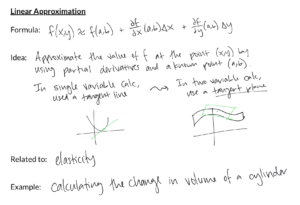As a first generation college student, I always felt like I was the only person struggling in the classroom. To compensate, I put incredible pressure on myself to perform what I thought was a successful student persona. This led to more anxiety and poor grades. Fortunately, my professors noticed and did two very simple things: they listened to me and shared their own struggles and wellbeing practices. I couldn’t name them at the time, but these simple pedagogical strategies worked for me and my peers on a small and large scale. When Hurricane Katrina struck (many students had deep connections to New Orleans) these professors shared resources and provided safe space in class for students to reflect. During the 2008 presidential election, several major party candidates actually gave speeches on our campus and again the professors devoted class time to discussion and asked students what they needed. When I followed the unlikely path to graduate school, I made a conscious effort to incorporate these strategies into my own teaching practice.
Of course, nothing could prepare any of us for teaching, learning, and living in 2020. This has been a semester unlike any other, and while we may have grown weary of the adjective “unprecedented,” I think it’s worth reaffirming that this is an unusually difficult time for all of us. The ongoing pandemic stresses compounded by the looming election and the tragic loss of two members of the Notre Dame community have left faculty, staff, and students in significant distress. To mitigate stress and anxiety we must attend to wellbeing both outside and within the classroom.
Student wellbeing and learning are linked in important ways. Research shows that student wellbeing is enhanced when students are holistically supported and when they feel that they are learning successfully. Inclusion is also an important component to wellbeing, and authentic connection to the intellectual community in the classroom is just as important to student wellbeing as those in social and residential settings. As instructors, we are well placed to lower the levels of distress by listening to student needs, making space for reflection, and helping them understand wellbeing in a way that does not diminish integrity or standards of accountability.
3 tips to support student wellbeing:
Acknowledge the importance of balancing academic and nonacademic demands
- Engage in conversation not directly related to the course
- Remind students that their grades do not determine their worth
- Ensure that the workload is reasonable
- Clearly communicate grading and assessment policies
- Do not require proof from students experiencing a crisis
- Incorporate reasonable flexibility into the grading and deadline system
- Talk about work-life balance with students
Create a safe classroom environment
- Solicit and incorporate student feedback (especially as it relates to the end of this semester)
- Take breaks during challenging discussions
- Respect student autonomy and provide avenues for student choice
- Acknowledge that the university can be intimidating and overwhelming
- Establish a relationship based on trust and shared expectations
- Explicitly thank students for bold but wrong intellectual efforts; if you slip up early in the semester, highlight it as an example of how to recognize and correct incorrect claims
- Ensure that discussions allow space for different perspectives and opinions
- Use inclusive language
- Address safety and support early on in the term
- Assess student participation in multiple ways
Openly discuss wellbeing related topics
- Remind students about campus resources and where to find them
- Ask students how they are doing
- Discuss your own wellbeing practices
- Check in with students who appear to be struggling
- Address campus issues that affect multiple students
- Share general information about mental health and wellbeing with students
Simply sharing and opening safe space in the classroom is an important step toward encouraging student wellbeing. In Teaching Community: A Pedagogy of Hope, bell hooks writes, “when teachers teach with love, combining care, commitment, knowledge, responsibility, respect, and trust, we are often able to enter the classroom and go straight to the heart of the matter, which is knowing what to do on any given day to create the best climate for learning.” Embracing an attitude of openness, hooks insists on community building as a means of supporting student success. Building a healthy campus is an ongoing project, but we can implement small, intentional changes to support students and walk with them through this difficult time.
Key Takeaway for Fall 2020
Ask students how they are and what could help, listen to their responses, and work with them to address these needs.
Suggested Reading:
5 minute Wellbeing Activities, Simon Fraser University
Being Sweet: Caring for the Brains in Our Bodies, Bayan Learning Community Southwestern College
“Creating New Connections and Conversations in the Classroom,” Inside Higher Education
Take a Break, A Guide to Creating A Restorative Routine, McDonald Center for Student Wellbeing
Teaching and Wellbeing, University of British Columbia
Wellness in the Virtual Classroom Toolkit, Stanislaus State
“What to Say After a Student Dies,” The Chronicle of Higher Education



